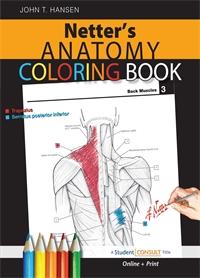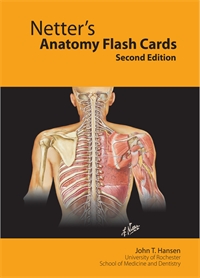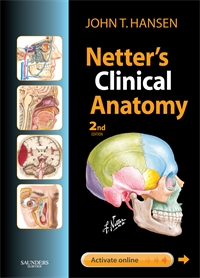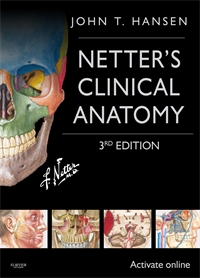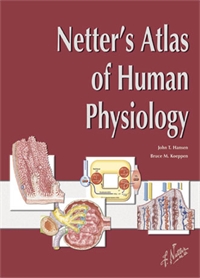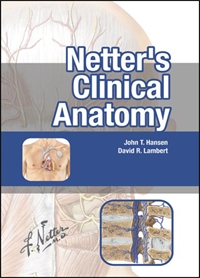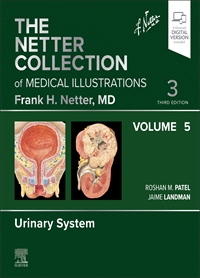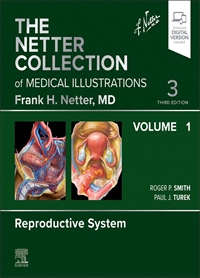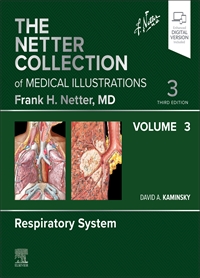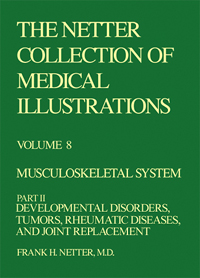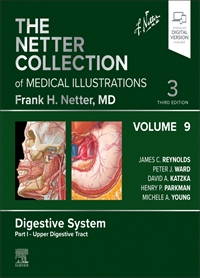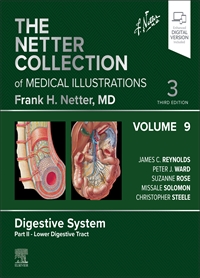The Netter Presenter: Physiology Collection
This product is no longer available, but individual images or image sets may be purchased
Author: John T. Hansen
ISBN: 9781929007094
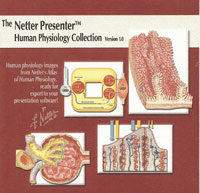
- Page 1.01: The Cell Membrane
- Page 1.02: Membrane Transport: I
- Page 1.02: Membrane Transport: I
- Page 1.03: Membrane Transport: II
- Page 1.04: Ionic Equilibria and Resting Membrane Potential
- Page 1.05: Action Potential
- Page 1.06: Conduction Velocity: Myelinated Fibers
- Page 1.06: Conduction Velocity: Unmyelinated Fibers
- Page 1.06: Conduction Velocity: Unmyelinated Fibers
- Page 1.07: Signal Transduction: I
- Page 1.07: Signal Transduction: I
- Page 1.07: Signal Transduction: I
- Page 1.07: Signal Transduction: I
- Page 1.07: Signal Transduction: I
- Page 1.07: Signal Transduction: I
- Page 2.01: Organization of the Brain: Cerebrum
- Page 2.01: Organization of the Brain: Cerebrum
- Page 2.01: Organization of the Brain: Cerebrum
- Page 2.02: Organization of the Brain: Cell Types
- Page 2.03: Blood-Brain Barrier
- Page 2.04: Synaptic Transmission: Morphology of Synapses
- Page 2.04: Synaptic Transmission: Morphology of Synapses - Enlarged Section of Bouton
- Page 2.05: Synaptic Transmission: Neuromuscular Junction
- Page 2.06: Synaptic Transmission: visceral Efferent Endings
- Page 2.07: Synaptic Transmission: Inhibitory Mechanisms
- Page 2.08: Synaptic Transmission: Chemical Synaptic Transmission
- Page 2.09: Synaptic Transmission: Temporal and Spatial Summation
- Page 2.1: Cerebrospinal Fluid (CSF): Brain Ventricles and CSF Composition
- Page 2.11: Cerebrospinal Fluid (CSF): Circulation of CSF
- Page 2.12: Spinal Cord: Ventral Rami
- Page 2.13: Spinal Cord: Membranes and Nerve Roots - Posterior View
- Page 2.13: Spinal Cord: Membranes and Nerve Roots - Anterior View
- Page 2.14: Peripheral Nervous System
- Page 2.15: Autonomic Nervous System: Schema
- Page 2.16: Autonomic Nervous System: Cholinergic and Adrenergic Synapses
- Page 2.17: Hypothalamus
- Page 2.18: Limbic System
- Page 2.18: Limbic System
- Page 2.19: The Cerebral Cortex
- Page 2.19: The Cerebral Cortex
- Page 2.2: Descending Motor Pathways
- Page 2.21: Cerebellum: Afferent Pathways
- Page 2.22: Cerebellum: Efferent Pathways
- Page 2.23: Cutaneous Sensory Receptors
- Page 2.23: Cutaneous Sensory Receptors
- Page 2.23: Visual System: Receptors
- Page 2.24: Cutaneous Receptors: Pacinial Corpuscle
- Page 2.25: Proprioception and Reflex Pathways I: Spinal Effector Mechanisms
- Page 2.25: Proprioception and Reflex Pathways I: Schematic Representation of Motor Neurons
- Page 2.26: Proprioception and Reflex Pathways II
- Page 2.26: Proprioception and Reflex Pathways II: Detail of Muscle Spindle
- Page 2.27: Proprioception and Reflex Pathways III
- Page 2.28: Proprioception and Reflex Pathways IV
- Page 2.29: Sensory Pathways: I
- Page 2.3: Sensory Pathways: II
- Page 2.31: Sensory Pathways: III
- Page 2.32: Visual System: Receptors
- Page 2.33: Visual System: Visual Pathway
- Page 2.34: Cochlear Receptors
- Page 2.34: Auditory System: Cochlea
- Page 2.34: Auditory System: Cochlea
- Page 2.35: Auditory System: Pathways
- Page 2.36: Vestibular System: Receptors
- Page 2.36: Vestibular System: Receptors
- Page 2.36: Vestibular System: Receptors
- Page 2.36: Vestibular System: Receptors
- Page 2.37: Vestibular System: Vestibulospinal Tracts
- Page 2.38: Gustatory (Taste) System: Receptors
- Page 2.39: Gustatory (Taste) System: Pathways
- Page 2.4: Olfactory System: Receptors
- Page 2.41: Olfactory System: Pathway
- Page 3.01: Skeletal Muscle: Organization
- Page 3.02: Skeletal Muscle: Sarcoplasmic Reticulum
- Page 3.03: Skeletal Muscle: Excitation-Contraction Coupling I
- Page 3.04: Skeletal Muscle: Excitation-Contraction Coupling II
- Page 3.05: Skeletal Muscle: Excitation-Contraction Coupling III
- Page 3.06: Skeletal Muscle: Length-Tension Relationship
- Page 3.06: Skeletal Muscle: Length-Tension Relationship
- Page 3.06: Skeletal Muscle: Length-Tension Relationship
- Page 3.07: Cardiac Muscle: Structure
- Page 3.08: Smooth Muscle: Structure
- Page 3.09: Smooth Muscle: Excitation-Contraction Coupling
- Page 4.01: Overview of Cardiovascular System
- Page 4.02: Body Fluid Compartments
- Page 4.03: Structure of Heart
- Page 4.04: Conduction System of the Heart: Right Side
- Page 4.04: Conduction System of the Heart: Left Side
- Page 4.05: Electrical Activity of the Heart
- Page 4.06: Electrocardiogram: I
- Page 4.06: Electrocardiogram: I
- Page 4.07: Electrocardiogram: II
- Page 4.07: Electrocardiogram: II
- Page 4.08: Electrocardiogram: III
- Page 4.08: Electrocardiogram: III
- Page 4.09: Cardiac Cycle
- Page 4.1: Cardiac Output: Pressure-Volume Loop
- Page 4.11: Cardiac Output: Function Curves
- Page 4.11: Cardiac Output: Function Curves
- Page 4.12: Coronary Circulation
- Page 4.13: Hemodynamics
- Page 4.13: Hemodynamics: Resistance to Flow ( R )
- Page 4.13: Hemodynamics: Cross-Sectinal Area (A) and Flow Velocity (V)
- Page 4.13: Hemodynamics
- Page 4.14: Arterial Pressure
- Page 4.15: Control of Arteriolar Tone
- Page 4.16: Microcirculation
- Page 4.16: Microcirculation: Lymphatic Flow
- Page 4.16: Microcirculation: Lymphatic Circulation
- Page 4.17: Circulation to Special Regions
- Page 4.18: Monitoring of Blood Pressure
- Page 4.19: Short-Term Regulation of Blood Pressure
- Page 4.19: Short-Term Regulation of Blood Pressure
- Page 4.2: Long-Term Regulation of Blood Pressure
- Page 4.21: Response to Exercise
- Page 4.22: Fetal Circulation
- Page 5.01: Lungs
- Page 5.02: Airway Structure: Trachea and Major Bronchi
- Page 5.03: Airway Structure: Intrapulmonary Airways
- Page 5.04: Airway Structure: Epithelium
- Page 5.05: Respiratory Muscles
- Page 5.06: Lung Volumes
- Page 5.07: Forces During Quiet Breathing
- Page 5.08: Mechanics of Respiration: Elastic Properties I
- Page 5.09: Mechanics of Respiration: Elastic Properties II
- Page 5.09: Mechanics of Respiration: Elastic Properties II
- Page 5.1: Mechanics of Respiration: Surface Forces
- Page 5.1: Mechanics of Respiration: Surface Forces
- Page 5.11: Mechanics of Respiration: Airway Flow
- Page 5.12: Mechanics of Respiration: Flow-Volume
- Page 5.12: Mechanics of Respiration: Flow-Volume
- Page 5.13: Intrapulmonary Circulation
- Page 5.14: The Alveolar Capillary Unit
- Page 5.15: Pulmonary Circulation
- Page 5.16: Ventilation/Perfusion
- Page 5.17: Pulmonary Vascular Resistance
- Page 5.18: Surfactant Effects
- Page 5.19: O2 and CO2 Exchange
- Page 5.19: O2 and CO2 Exchange
- Page 5.2: O2 and CO2 Exchange and Transport
- Page 5.2: O2 and CO2 Exchange and Transport
- Page 5.21: O2 and CO2 Exchange
- Page 5.22: Control of Respiration
- Page 5.22: Control of Respiration
- Page 5.23: Role of Lungs in Acid-Base Balance
- Page 5.23: Role of Lungs in Acid-Base Balance
- Page 5.24: Response to Exercise
- Page 5.24: Response to Exercise
- Page 5.25: Obstructive Disease: Centriacinar (Centrilobular) Emphysema
- Page 5.26: Obstructive Lung Disease
- Page 5.26: Obstructive Lung Disease
- Page 5.27: Restrictive Lung Disease
- Page 5.27: Restrictive Lung Disease
- Page 5.28: Pulmonary Function Testing (A)
- Page 5.28: Pulmonary Function Testing (B)
- Page 5.28: Pulmonary Function Testing (C)
- Page 5.28: Pulmonary Function Testing (D)
- Page 5.28: Pulmonary Function Testing (E)
- Page 5.21: O2 and CO2 Exchange
- Page 6.01: Anatomy of the Kidney
- Page 6.01: Anatomy of the Kidney
- Page 6.02: Anatomy of the the Kidney: The Nephron
- Page 6.03: Glomerular Structure
- Page 6.04: Glomerular Filtration
- Page 6.05: Renal Clearance I
- Page 6.06: Renal Clearance: II
- Page 6.07: Renal Clearance: III
- Page 6.08: Na+ Reabsorption
- Page 6.09: ADH Secretion and Action
- Page 6.1: Urine Concentration
- Page 6.11: Urine Dilution
- Page 6.12: Renin-Angiotensin-Aldosterone System
- Page 6.12: Renin-Angiotensin-Aldosterone System
- Page 6.12: Renin-Angiotensin-Aldosterone System
- Page 6.13: Response to Volume Expansion
- Page 6.14: Response to Decreased ECF
- Page 6.15: Potassium Excretion
- Page 6.16: Calcium and Phosphate
- Page 6.17: HCO3- Reabsorption
- Page 6.17: HCO3- Reabsorption
- Page 6.18: Renal Production of New HCO3–
- Page 6.18: Renal Production of New HCO3–
- Page 7.01: Esophagus
- Page 7.01: Esophagus
- Page 7.02: Gastroesophageal Junction
- Page 7.02: Gastroesophageal Junction
- Page 7.03: Lower Esophageal Sphincter
- Page 7.04: Enteric Nervous System
- Page 7.05: Autonomic Innervation
- Page 7.05: Autonomic Innervation
- Page 7.06: Autonomic and Enteric Integration
- Page 7.07: Motility
- Page 7.08: Major GI Hormones
- Page 7.08: Major GI Hormones
- Page 7.09: Structure of the Stomach
- Page 7.1: Appetite and Hunger
- Page 7.11: Gastric Motility: Factors Affecting Gastric Emptying
- Page 7.11: Gastric Motility: Sequence of Gastric Motility
- Page 7.12: Gastric Digestiion
- Page 7.13: Gastric Secretion: I
- Page 7.14: Gastric Secretion: II
- Page 7.14: Gastric Secretion: II
- Page 7.15: Gastric Secretion: III
- Page 7.16: Small Intestine Structure: I
- Page 7.17: Small Intestine Structure: II
- Page 7.18: Small Intestine Structure: III
- Page 7.19: Small Intestine Motility
- Page 7.2: Large Intestine Structure
- Page 7.21: Rectum and Anal Canal
- Page 7.22: Colonic Motility
- Page 7.23: Defecation
- Page 7.23: Defecation
- Page 7.24: Salivary Gland Structure
- Page 7.24: Salivary Gland Structure
- Page 7.25: Salivary Gland Secretion
- Page 7.26: Pancreas Structure
- Page 7.27: Pancreas Secretion
- Page 7.28: Liver Structure: Anterior Aspect
- Page 7.28: Liver Structure: Visceral Surface
- Page 7.29: Liver Ultrastructure
- Page 7.3: Intrahepatic Biliary System
- Page 7.31: Liver Function
- Page 7.32: Bilirubin Excretion
- Page 7.33: Gallbladder Structure and Function
- Page 7.34: Overview of GI Tract Fluid and Electrolyte Transport
- Page 7.35: Digestion of Protein
- Page 7.36: Digestion of Carbohydrates
- Page 7.37: Digestion of Fat
- Page 7.38: Absorption of Essential Elements and Vitamins
- Page 7.38: Absorption of Essential Elements and Vitamins
- Page 7.38: Absorption of Essential Elements and Vitamins
- Page 7.38: Absorption of Essential Elements and Vitamins
- Page 7.38: Absorption of Essential Elements and Vitamins
- Page 7.38: Absorption of Essential Elements and Vitamins
- Page 8.01: Overview of Hormone Action
- Page 8.01: Overview of Hormone Action
- Page 8.02: Regulation of Hormone Secretion
- Page 8.03: Hypothalamus and Pituitary
- Page 8.04: Anterior Pituitary
- Page 8.05: Posterior Pituitary: Oxytocin
- Page 8.06: Posterior Pituitary: ADH
- Page 8.07: Growth Hormone
- Page 8.08: Thyroid Gland: Structure
- Page 8.09: Thyroid Gland: Function
- Page 8.1: Thyroid Gland: Hormone Action
- Page 8.11: Adrenal Gland: Structure
- Page 8.12: Adrenal Gland: Histology
- Page 8.13: Adrenal Cortical Hormones
- Page 8.14: Cortisol
- Page 8.15: Adrenal Androgens
- Page 8.16: Aldosterone
- Page 8.17: Adrenal Medulla
- Page 8.18: Endocrine Pancreas
- Page 8.19: Insulin Secretion
- Page 8.19: Insulin Secretion
- Page 8.2: Actions of Insulin
- Page 8.21: Actions of Glucagon
- Page 8.22: Parathyroid Gland
- Page 8.23: Gonad and Genital Duct Formation
- Page 8.24: Development of the External Genitalia
- Page 8.25: Puberty
- Page 8.26: Testes
- Page 8.27: Menstrual Cycle
- Page 8.28: Hormonal Regulation of the Menstrual Cycle
- Page 8.28: Hormonal Regulation of the Menstrual Cycle
- Page 8.29: Prolactin

